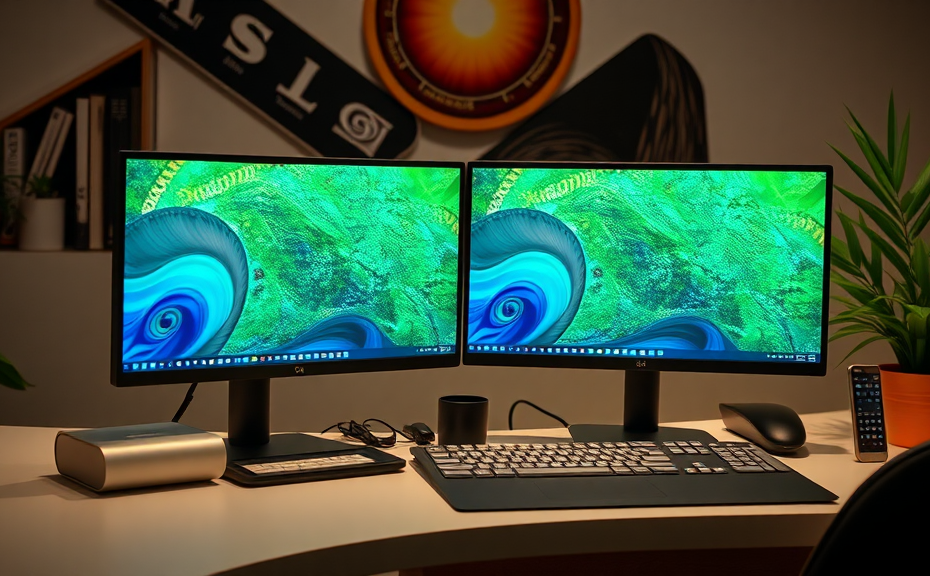The rise of dual-screen setups in both home and office environments has revolutionized the way we work. As more people adopt this technology for enhanced productivity, understanding the ergonomics of dual-screen systems becomes essential. Proper dual screen ergonomics can prevent discomfort and promote efficiency.
When positioning dual monitors, it’s crucial to follow ergonomic principles. Here are some key considerations:
- Monitor Height: The top of the screens should be at or slightly below eye level. This positioning allows users to keep their neck straight and maintain a comfortable posture.
- Distance: Monitors should be placed about an arm’s length away. This reduces eye strain and promotes better visual comfort.
- Angle: A slight tilt of the screens can enhance visibility while minimizing glare from overhead lighting. Both screens should be angled inward for a more natural line of sight.
- Consistent Usage: If one monitor is used for primary tasks and the other for reference, position the primary monitor directly in front of you, with the secondary screen at the side. This setup minimizes movement and strain.
Investing in adjustable monitor stands can greatly enhance dual screen ergonomics. These stands enable users to modify the height and angle of their displays with ease, fostering a more personalized workspace. Moreover, utilizing ergonomic chairs with lumbar support complements the dual-screen arrangement, ensuring overall comfort throughout the workday.
Ultimately, dual screen ergonomics not only enhance productivity but also safeguard against the common physical ailments associated with prolonged screen time. By prioritizing ergonomic configurations, users can enjoy a more comfortable and efficient workspace, maximizing the benefits of dual screens.
